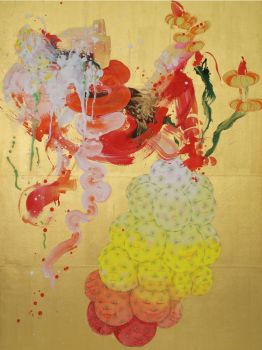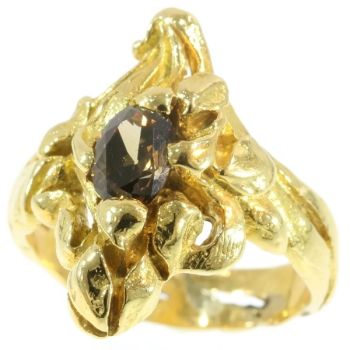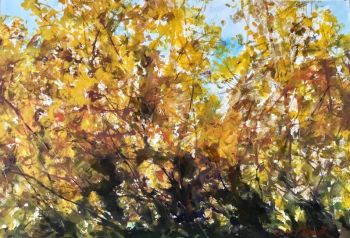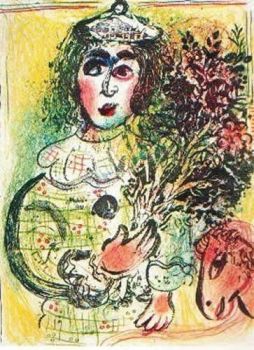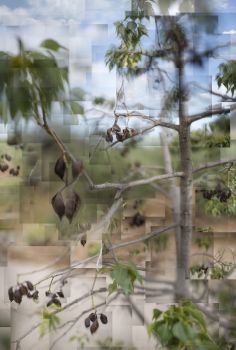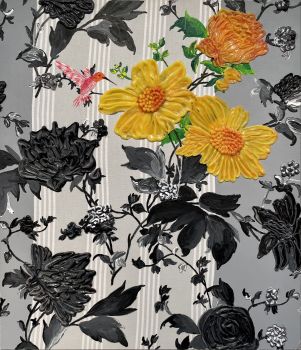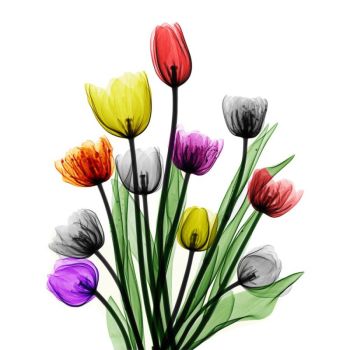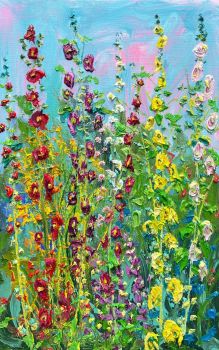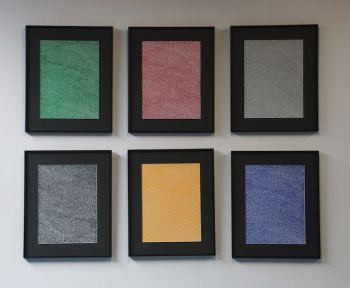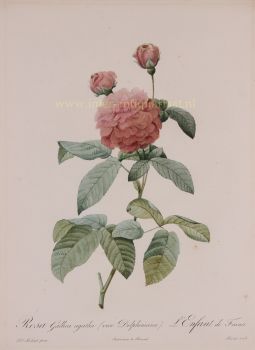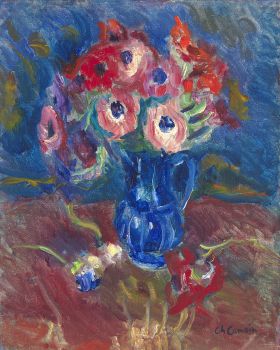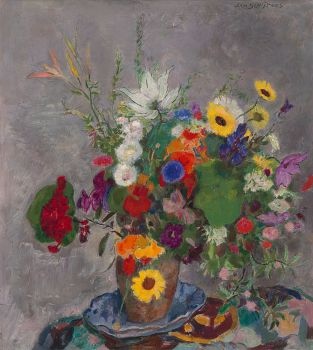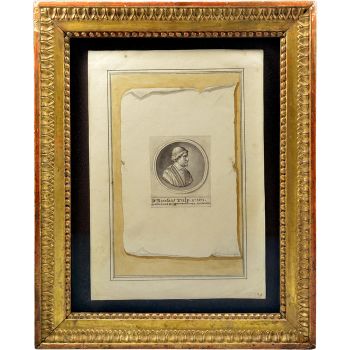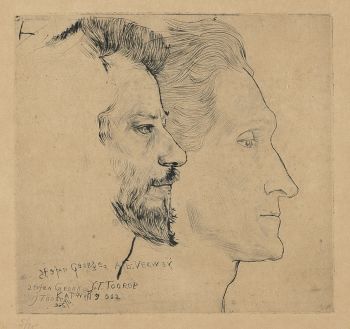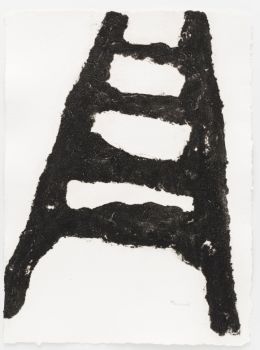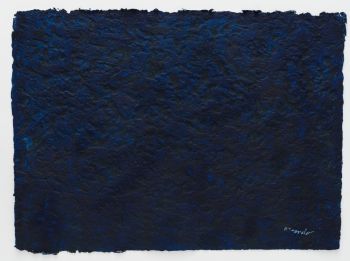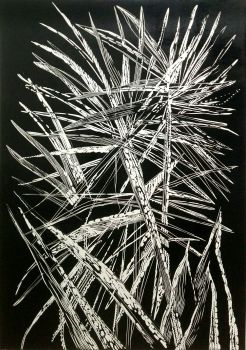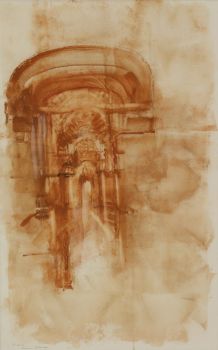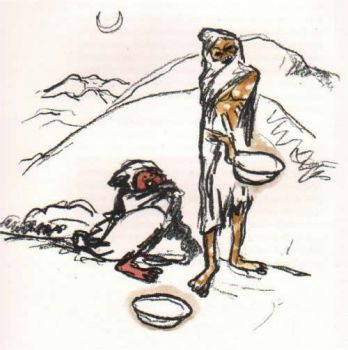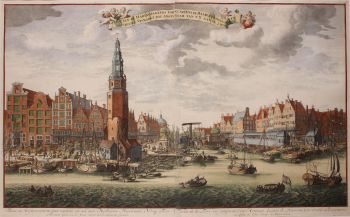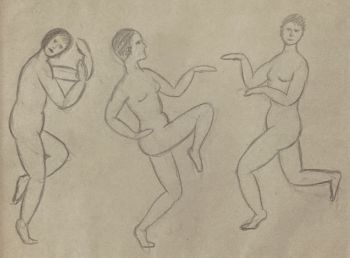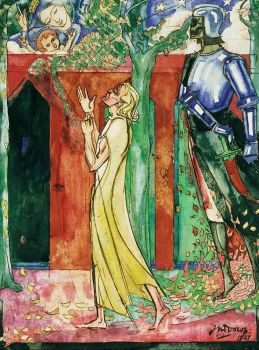Catalogue of plants of the Arabian Peninsula, with scientific names in Latin, Arabic and Persian 1919
Ethelbert Blatter
Papel
Atualmente indisponível via Gallerease
- Sobre arteFlora Arabica. No. 1-5.
Calcutta (no. 5: Delhi), Superintendent government printing, 1919-1933. 5 parts (of 6). With folding map of the Arabian Peninsula (in no. 2). Later cloth, original wrappers of separate parts bound in.
First five parts of a description of the plants of the Arabian Peninsula; here with the preliminaries and original wrappers of each part, written by Ethelbert Blatter (1877-1934). The scientific plant names are given in Latin, Arabic, Persian as well as in regional dialects. The aim was to give a history of the botanical exploration of Arabia and a general sketch of the vegetation. A sixth part appeared posthumously.
Extract from the Records of the Botanical Survey of India (BSI), vol. VIII; the organisation established in 1890 for the purpose of identifying plant species India, and of establishing their economic value. Flora Arabica was a key work of reference on Arabian vegetation well into the 20th century.
With owner's inscription on flyleaves. A few marginal tears (some repaired), a couple leaves loosely inserted and some small stains on the first title-page. A good copy.
Stafleu & Cowan 556. - Sobre artistaEthelbert Blatter (15 de dezembro de 1877 - 26 de maio de 1934) foi um padre jesuíta suíço e botânico pioneiro na Índia britânica. Blatter nasceu no cantão de Appenzell Innerrhoden, na Suíça. Blatter foi para o colégio em Schwyz e depois mudou-se para a cidade fronteiriça de Feldkirch, na Áustria, juntando-se aos jesuítas. Blatter foi para a Holanda em 1898, estudando clássicos e filosofia. Ele também desenvolveu interesse em botânica e participou de conferências científicas na Europa. Blatter mudou-se para a Índia em 1903, onde foi nomeado professor de botânica no St. Xavier’s College Bombay. Ele viajou extensivamente pela Índia e escreveu uma importante série de artigos entre 1904 e 1909, intitulada As Palmas da Índia Britânica e do Ceilão, Indígena e Introduzida. Em 1909, Blatter voltou para a Europa, completando seus estudos teológicos em Hastings, no sul da Inglaterra. Ordenado sacerdote em 1912, Blatter viveu um ano na Holanda, antes de retornar a Londres. Quando a Grande Guerra (1914-1919) estourou, Blatter mudou-se de Londres para a Índia, chegando a Bombaim em outubro de 1915. Como professor de botânica em St. Xavier, Blatter construiu uma extensa coleção botânica. Em 1925, Blatter se aposentou e começou a se concentrar mais em seus estudos botânicos. Ele escreveu, entre outros, Some Beautiful Indian Trees (1925), Beautiful Flowers of Kashmir (1927, 1928) e The Ferns of Bombay (1932). Depois de uma queda feia de um cavalo em 1930, sua saúde começou a piorar. Em 1932, Blatter recebeu a primeira Medalha Memorial Johannes Bruehl da Sociedade Asiática de Bengala por "Contribuições importantes e conspícuas para o conhecimento da botânica asiática". Blatter morreu em 26 de maio de 1934 na St. Vincent’s High School, Pune
Artwork details
Categoria
Assuntos]
Material e Técnica
Related artworks
Engelbert Kaempfer
LIVRO ENGELBERT KAEMPFER1651 - 1716
Preço em pedidoZebregs & Röell - Fine Art - Antiques
Yoko Ono
YOKO ONO: "ARISING" SIGNED BOOK PLUS SMALL ARTWORK 2010 - 2014
Preço em pedidoGallerease Selected
Tilmanus Nicolaus Maastricht
Missale Romanum com montagens de prata holandesa1788 - 1792
Preço em pedidoJacob J. Roosjen SRI
LAWRENCE WEINER
"SKIMMING THE WATER [MENAGE A QUATRE]" Signed book plus small artwork2010 - 2014
Preço em pedidoGallerease Selected
1 - 4 / 22William Rosewood
She Loves Me, She Loves Me Not2019 - 2020
Preço em pedidoGalerie Mia Joosten Amsterdam
1 - 4 / 24- 1 - 4 / 24

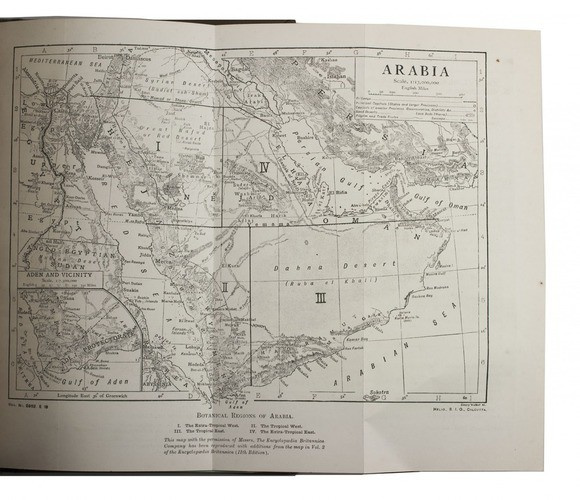




















!["SKIMMING THE WATER [MENAGE A QUATRE]" Signed book plus small artwork by LAWRENCE WEINER](https://media-2.gallerease.com/images/442bfd5f-fc31-4e18-a2fa-ee0c08eade64/350x350/skimming-the-water-menage-a-quatre-signed-book-plus-small-artwork.jpg)





